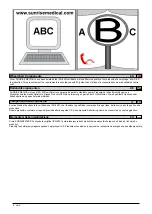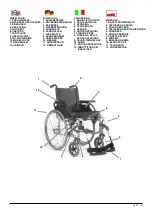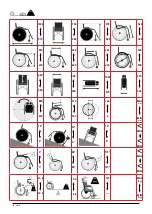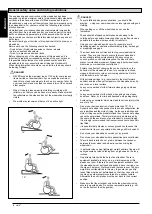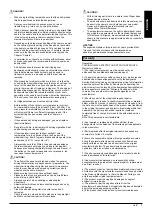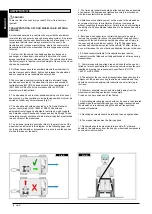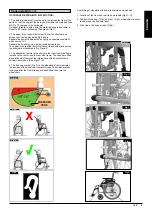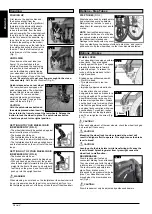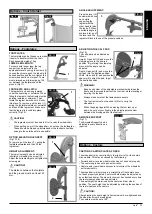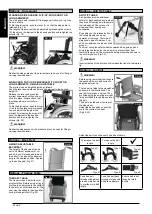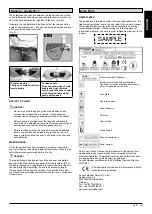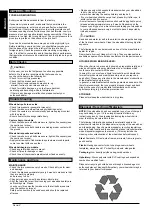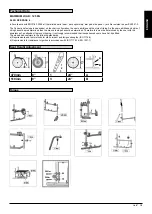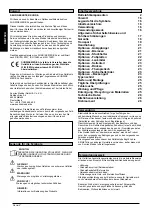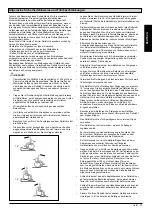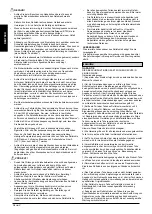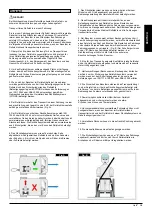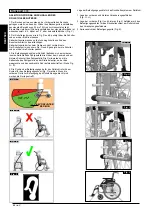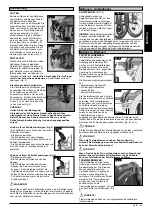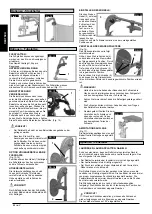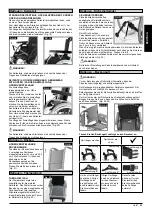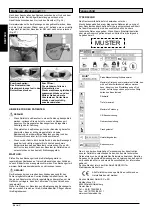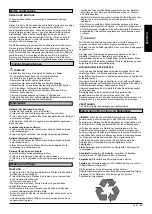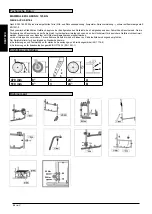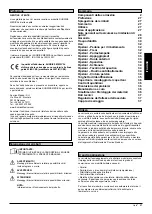
12
UniX
2
en
GL
ish
stanDarD siDe GuarDs, fLip-up, with short or
LonG arMrests
The side guard with rounded off front edges will allow you to get up
close to a table.
To flip the armrest up, push the lever (1), so that the side guard is
released (Fig. 18).
The length of the armrest can be adjusted by releasing the screws
(2), then move the armrest to the desired position and re-tighten the
screws (Fig. 19).
warninG!
Neither the side guards nor the armrests are to be used for lifting or
carrying the wheelchair.
siDeGuarD, fLip-up, reMoVabLe with short or
LonG arMrests, heiGht-aDjustabLe
The armrest can be height-adjusted as follows.
Push the lever downwards and move the armrest to the desired
height (3).
Release the lever and press the
armrest downwards until you hear it
click into place. Always check that
the sideguards are correctly in
place.
To flip the armrest up, push the lever
(1) so that the sideguard is released.
You can adjust the length of the
armrest by releasing the screws (2)
push the armrest to the desired
position and then re-tighten the
screws (Fig. 20).
warninG!
Neither the sideguards nor the armrests are to be used for lifting or
carrying the wheelchair.
heiGht-aDjustabLe
bacKrest
The height of the backrest can be
set to 2 different positions (41 cm
and 42.5 cm). Release and remove
the bolts (1), and push the backrest
sling to the desired position. Tighten
up the bolts again (Fig. 21).
therapy taBle
The tray provides a flat surface for
most activities. Before using a tray, it
first has to be adjusted to the width of
the seat by an authorised dealer. The
user must be sitting in the wheelchair
during this adjustment (Fig. 22).
options - side Guard
fiG. 18
1
fiG. 19
2
fiG.20
1
2
3
options - back rest
fiG.21
1
options - anti tip tubes
anti-tip tubes
Anti-tip tubes provide additional
safety for inexperienced users when
they are still learning how to operate
their wheelchair. They prevent a
wheelchair from tipping over
backwards.
By pushing on the release button (1),
the safety wheels can be set
upwards or removed. There must
always be a gap of between 3 cm
and 5 cm between the tube and the
ground.
You must swing the safety wheels upwards when going up and
down large obstacles (such as a kerb) to prevent them from
touching the ground. Then rotate the safety wheels back down to
the normal position (Fig. 23).
warninG!
Incorrect setup of the anti-tips will increase the risk of a rearwards
tip.
warninG!
Before using your wheelchair ensure
the seat belt is worn and correctly
adjusted before use.
The lap belt is fitted to the wheelchair
as shown in the illustrations. The
seat belt comprises 2 halves. They
are fitted using the existing arm rest
fixing bolt fitted through the eyelet on
the belt.
The belt is routed under the rear of
the side panel.
Adjust the belt position so buckles
are in the centre of the seat.
(Fig.24-25)
Adjust lap belt to suit the user’s needs as follows:
To increase the belt
length
To reduce the belt
length
Feed free belt
through slide adjust
-
ers and male buckle
to provide more belt
length.
Feed free belt back
through male buckle
and slide adjusters.
Ensure belt is not
looped at male
buckle.
fiG. 23
1
options - Lap belt
fiG. 24
fiG. 25
Type A
Type A
Type A
Type B
Type B
Type B
fig. 22
options - therapy table


